 One day last week, three feet of snow fell in the northern Great Plains. In Michigan, it was 68 degrees, blue sky, and tempting to go swimming, but that the big lake temperature now hovers in the mid-fifties after successive frosty nights. What happens weather-wise in the Great Plains today will course into Chicago tomorrow, skate across the slippery surface of Lake Michigan and shower upon Michigan's western coast the day after tomorrow. As the first snowfall of the season heads this way, let's put winter on hold for just a little longer and talk flowers.
One day last week, three feet of snow fell in the northern Great Plains. In Michigan, it was 68 degrees, blue sky, and tempting to go swimming, but that the big lake temperature now hovers in the mid-fifties after successive frosty nights. What happens weather-wise in the Great Plains today will course into Chicago tomorrow, skate across the slippery surface of Lake Michigan and shower upon Michigan's western coast the day after tomorrow. As the first snowfall of the season heads this way, let's put winter on hold for just a little longer and talk flowers.After getting the garden framework of trees and shrubs planted, the next phase entailed laying in the seeds, seedling plants and bulbs for the flowering beds. These would go across the front wall of the house and much of the front yard, across the back wall of the garage facing the rear of the house, and into a big circular bed middle-left in the back yard. Except for the bulbs that needed to wait for late fall planting, all the starters of the flower patches went into the ground in July. Most have come along famously in size and bloom over the five years since the garden began, others could not seem to get a rooted, lasting grip on the sunny, sandy plot.
For the most part and increasingly over the years, plants chosen must be of a perennial nature. Gardens fitted out with perennials do not require complete planting afresh every year, saving lots of repetitive labor to plant the same space. Cost outlay for plants occurs mainly at the start of a garden and hard-earned dollars don't get invested in flowers that disappear after a single season. Unless a gardener has more money than sense, it seems foolhardy to buy lots of expensive, doomed annuals year after year when there are thousands of perennial options that repay the outlay of sweat equity and greenbacks for years to come.
Of course, sometimes a particular plant that just happens to be an annual holds a special spot in the gardener's favor. Even in my largely perennial garden, some irresistible annuals get re-installed spring after spring. Gomphrena globe amaranth, cosmos, alyssum and bachelor buttons are the ones that invariably get reseeded every year, just because of their exceptional good looks and because my summer garden would seem incomplete without their lovely colors. All of these except the gomphrena (a temperamental Miss) are very easy to grow and want only regular drinks of water to flourish. Cosmos and bachelor buttons will self-seed to a limited extend, not necessarily where originally planted but as surprise shoots scattered hither and yon. Alyssum are supposed to self-seed, and often do for a year or so, but not reliably and pretty much not at all after a very hot, dry August and September.
Sowing seeds directly into the garden is another economizing measure that costs lots less than purchasing already-sprouted seedlings, but the results are often mixed, with maybe a third of seeds never yielding plants. The seed-sowing gardener must water the seeded plots vigilantly and daily for several weeks after planting to have any hope of success, and even then some seeds just lie lifeless in the soil, suggesting that a portion of every batch of seed just doesn't carry the power of germination, for whatever reason.
The perennial flowers and herbs that form the meat on the bones of my garden, and get bigger and more flush with blossoms by the year, include peonies, hollyhocks, columbine, lily of the valley, Russian sage, lavender, roses, lilies, mums, yarrow, dianthus, baby's breath, thyme, phlox, chives, daisies, bleeding hearts, snow-on-the-mountain and snow-in-summer, veronica, primroses, Siberian iris, lupines, and poppies. Narcissus and daffodil, windflower (anemone), and alliums are the most successful bulbs.
Foxgloves have not worked very well, whether in a sunny spot where they seem to wilt away if not watered constantly, or in a dappled shade where they seem to languish for lack of sunshine, so I've pretty much given up on them and trying to satisfy their unfathomable needs. Old-fashioned flowering stocks beget one of the most beautiful and possibly the most heavenly scented of flowers (Flickr.com photo at top of this entry), but two summers of seeding stocks gave me not one bloom. Stocks have a multi-budded flower on a tall stalk, similar to a delphinium but with the flower buds more closely nestled together. It took a hunt to find stock seeds, even though this flower is a staple in every florist shop, seed packets for it are rarely found at garden centers and it seems to be slipping into the category of a heritage plant rather than a popular contemporary. First seeded two summers ago, the stocks put up really strong, emerald-green stalks and felty leaves, and kept growing all summer without flowering. This past summer, seeding and watering religiously didn’t even result in any sprouting. Next summer they will get one last try (we live in hope).
Delphiniums also have proven somewhat tough to establish for a multi-year reappearance, but because of their gorgeous flowers, they do get replenished with new seedlings each spring. Smaller butterfly delphiniums, on the contrary, grow and increase their bright cornflower-blue flowers dependably, summer after summer.
The garden also enjoys a couple stands of grasses, one in the front yard and one in the back. Alongside the Russian sage, nice, dense clumps of blue oat grass, miscanthus silver grass, miscanthus fountain grass, pennisetum orientale karly rose, and panicum vergatum switchgrass rise and extend their circumference and height each year. With grasses, experience has shown they like to be watered well at least weekly for the first year or two, thereafter becoming fairly tolerant of periods of drought. The grasses are slow starters each season, not really getting up to speed with new greenery until into late June or July, but then they take off in happy spurts of growth, and wave their feathery arms and seed heads all through late summer and autumn. If left untrimmed, these charmers provide stalks of interesting structure in the garden throughout winter. All get cut back to four-to-six inches height come late March, making way for the next summer's burgeoning. Variegated porcupine and zebra grasses, handsome though they be, failed to become permanent residents in my garden. Variegated grasses do prefer a damp and loamy soil and perhaps are best suited to pond banks, marshy areas and riversides.
All in all, what has been coaxed forth on the sandy lot is a sprawling, spreading, old-fashioned cottage garden. Each type of flower is planted in groupings together with others of its kind to maximize impact. Plants for spring, summer and fall blooming have been purposely incorporated into the staples of the garden so as to have flowers unfolding from April through October. Every garden is forever an incomplete work in progress, and every year around this time, notes get jotted and catalogs scoured for the additions to existing species and the desirable newcomers to be acquired for next spring's sowing season. There is no such thing in the cottage garden as too many plants or no room for more.
The garden also enjoys a couple stands of grasses, one in the front yard and one in the back. Alongside the Russian sage, nice, dense clumps of blue oat grass, miscanthus silver grass, miscanthus fountain grass, pennisetum orientale karly rose, and panicum vergatum switchgrass rise and extend their circumference and height each year. With grasses, experience has shown they like to be watered well at least weekly for the first year or two, thereafter becoming fairly tolerant of periods of drought. The grasses are slow starters each season, not really getting up to speed with new greenery until into late June or July, but then they take off in happy spurts of growth, and wave their feathery arms and seed heads all through late summer and autumn. If left untrimmed, these charmers provide stalks of interesting structure in the garden throughout winter. All get cut back to four-to-six inches height come late March, making way for the next summer's burgeoning. Variegated porcupine and zebra grasses, handsome though they be, failed to become permanent residents in my garden. Variegated grasses do prefer a damp and loamy soil and perhaps are best suited to pond banks, marshy areas and riversides.
All in all, what has been coaxed forth on the sandy lot is a sprawling, spreading, old-fashioned cottage garden. Each type of flower is planted in groupings together with others of its kind to maximize impact. Plants for spring, summer and fall blooming have been purposely incorporated into the staples of the garden so as to have flowers unfolding from April through October. Every garden is forever an incomplete work in progress, and every year around this time, notes get jotted and catalogs scoured for the additions to existing species and the desirable newcomers to be acquired for next spring's sowing season. There is no such thing in the cottage garden as too many plants or no room for more.
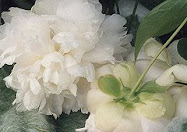
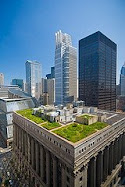

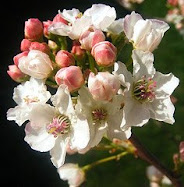
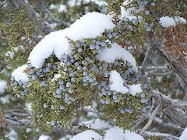


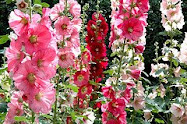

No comments:
Post a Comment